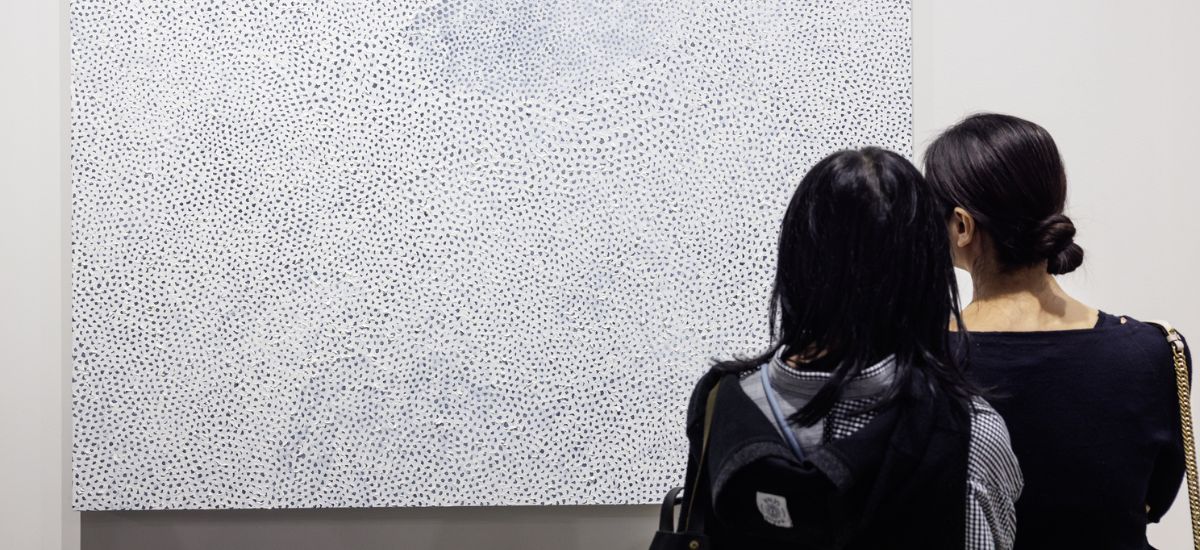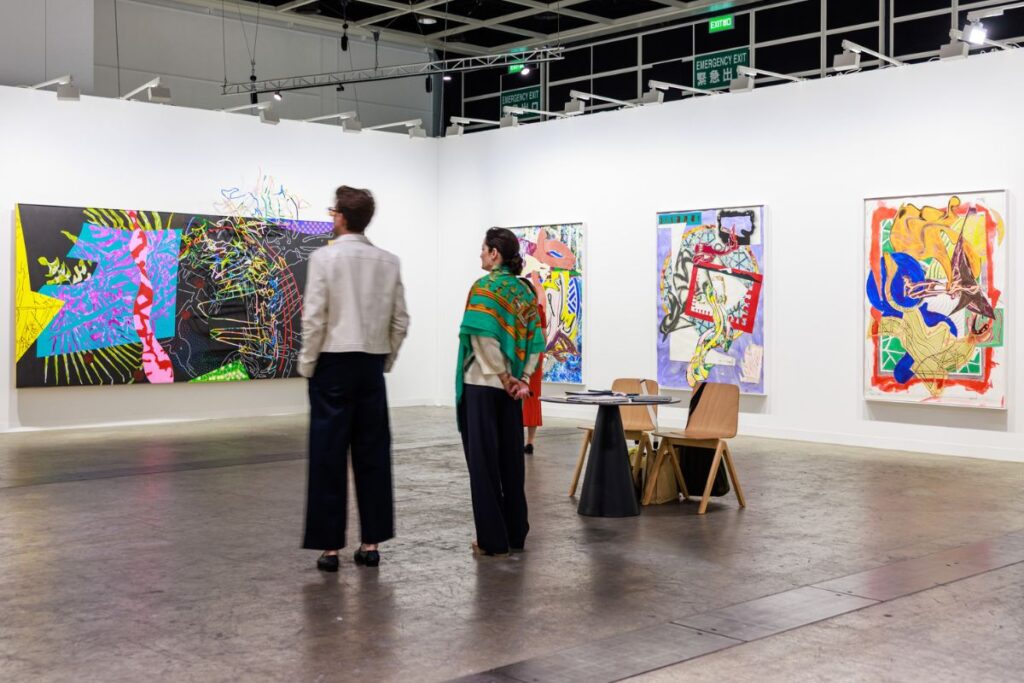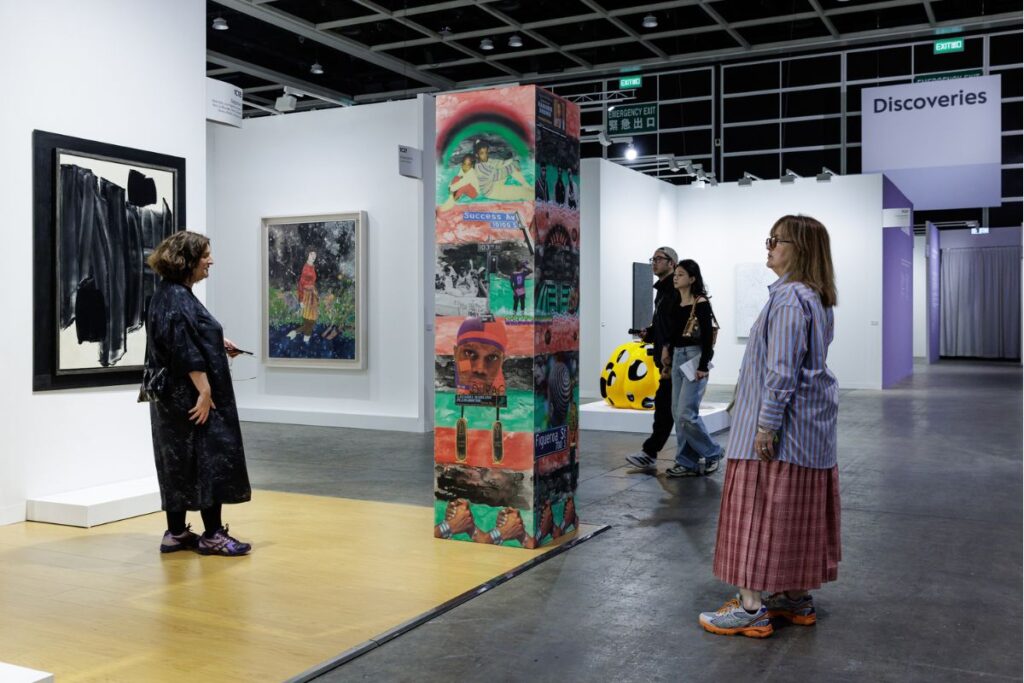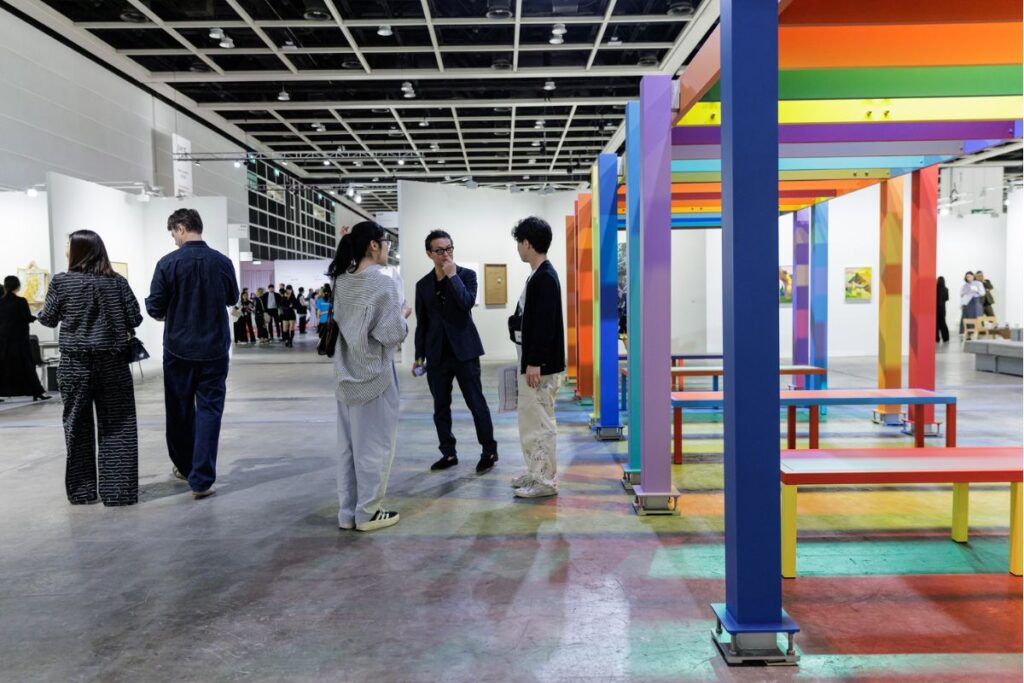What happens when billion-dollar insights collide with brushstrokes? We get the Art Basel & UBS Art Market Report 2025—a poetic paradox wrapped in economic precision.
Art Basel 2025: Where Data Meets Desire
Art Basel & UBS Art Market Report 2025 reveals a nuanced shift in the global art landscape. With sales dropping 12% but transactions rising, the report uncovers a market driven less by record-breaking prices and more by meaningful, mid-range momentum. Private sales surge, digital channels mature, and fairs remain essential as art responds to—and reflects—an era of global uncertainty and cultural flux.
Por: Angela Leon Cervera


How did the market perform beyond the headlines?
They say numbers don’t lie, but they rarely tell the whole story. Global art sales dipped 12% in 2024, totaling $57.5 billion. Yet beneath this surface downturn, the pulse of the market beat steadily—more than 40 million transactions, up 3% year over year. Less glamorously priced, more widely embraced. High-end pieces might have taken a breather, but mid-tier players and emerging artists stepped into the spotlight.
And there it is—the art world’s latest twist: value in volume, not just in vintage.

Who held the reins in a shifting global hierarchy?
The US maintained its throne with 43% of global sales. The UK reclaimed second place with 18%. China, battered by economic headwinds, slipped to third with 15%, marking its weakest performance since 2009.
But this wasn’t just a shuffle in rank. It was a philosophical shift. A world grappling with protectionism, geopolitical anxiety, and cultural realignments inevitably imprints itself on canvas and commerce alike. Art doesn’t escape politics—it absorbs, reflects, and occasionally protests.

Why did the quiet corners get louder?
Auction house private sales rose 14%, defying the public auction slump. Online sales, though down 11%, still held strong at 18% of total market value—double their pre-pandemic share. Digital wasn’t dethroned; it simply matured. Collectors have grown savvy, trading screens for strategy. They scroll, yes, but with intention.
Even art fairs, those buzzing cathedrals of connectivity, held their ground. 31% of dealer sales happened there. A 2% rise in overseas fair participation underscored one truth: nothing replaces the intimacy of seeing a work in person. Not yet, anyway.
So what does all this say about the art world today?
It whispers a quiet confidence. That in chaos, creativity thrives. That a downturn isn’t necessarily defeat. That smaller dealers—those operating below $250,000—grew by 17% is more than a statistic. It’s a story of reinvention. Of new narratives. Of spaces where risk is not just tolerated, but essential.
This isn’t a market in retreat. It’s a market in transformation.
If Art Basel 2025 teaches anything, it’s this: art endures not despite instability, but because of it. The lines between economics and expression have blurred. And somewhere in that gray area, between capital and canvas, we find our most human selves.
Decoded: The Art Basel Report 2025
- What is the Art Basel & UBS Art Market Report 2025?It's an annual deep dive into global art sales, trends, and economic insights, co-published by Art Basel and UBS.
- Why did global art sales fall in 2024?The high-end market slowed down, impacted by political uncertainty, trade tensions, and cautious collectors. But mid-range activity surged.
- Are online art sales still growing?Not in total value, but their market share remains strong—18% in 2024, double that of pre-pandemic years.
- What role do art fairs play today?They're essential. 31% of dealer sales happened at fairs in 2024, proving that in-person engagement still matters.
- How did emerging dealers perform?Exceptionally. Those with under $250,000 in turnover grew sales by 17%, showing strength at the grassroots level of the market.
Ready to explore the soul of the contemporary art market? Stay connected for more exclusive insights from Art Basel 2025—where data becomes desire, and creativity finds its edge.
